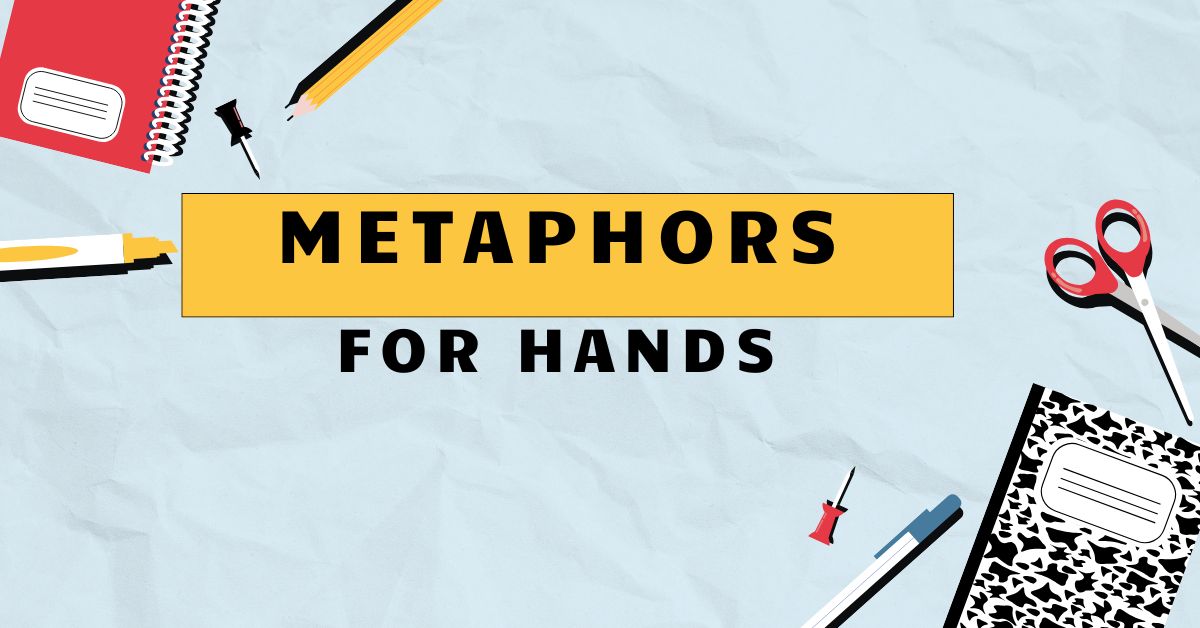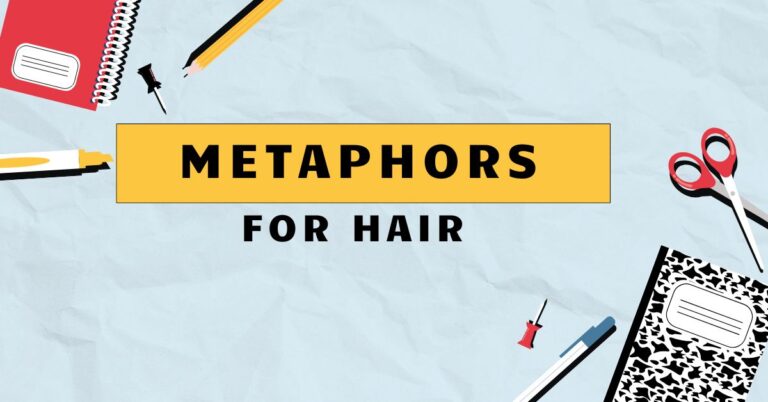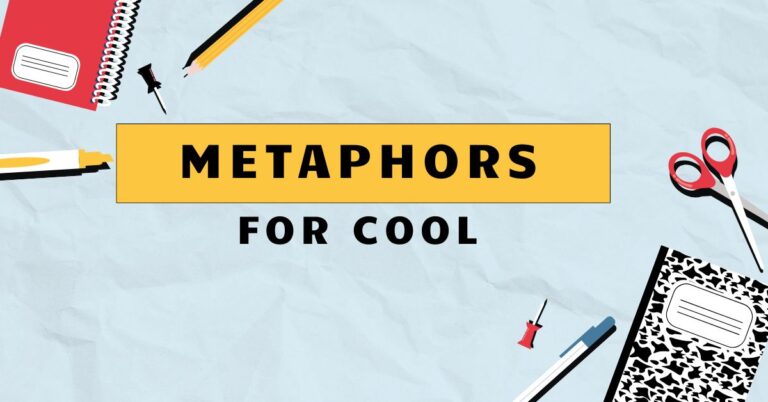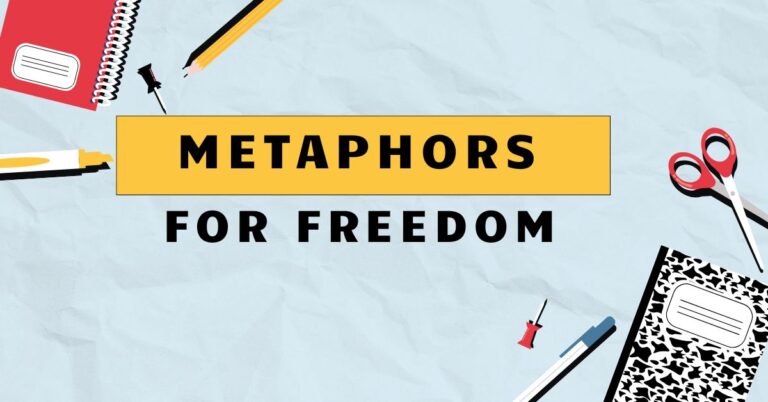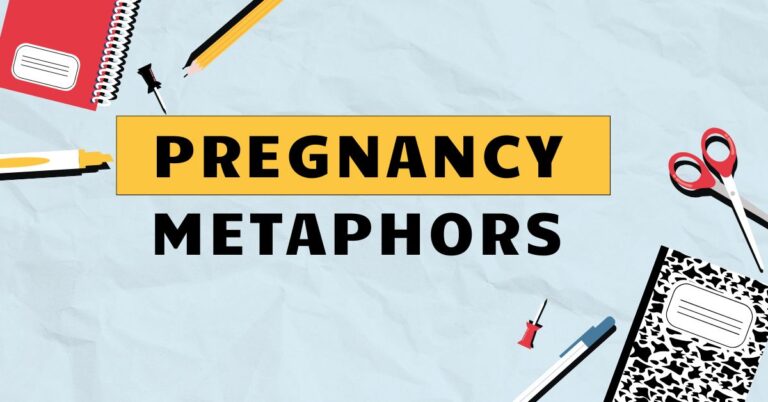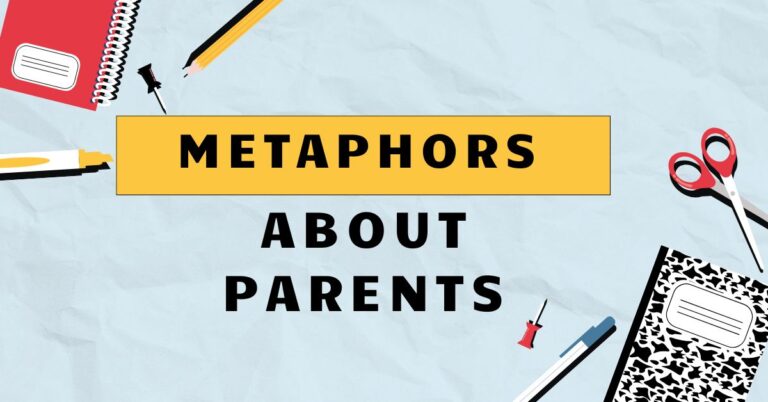33 Metaphors for Hands: A Comprehensive Guide
Understanding metaphors is crucial for mastering the nuances of the English language. Metaphors enrich our communication, making it more vivid and engaging.
This article delves into the fascinating world of metaphors for hands, exploring how these figures of speech enhance our descriptions and convey deeper meanings. Whether you’re an ESL student, a writer seeking to improve your prose, or simply someone interested in language, this guide will provide you with a thorough understanding of this topic.
By the end of this article, you will be able to identify, interpret, and effectively use metaphors for hands in your own writing and speech.
Table of Contents
- Introduction
- Definition of Metaphor
- Structural Breakdown of Metaphors for Hands
- Types and Categories of Metaphors for Hands
- Examples of Metaphors for Hands
- Usage Rules for Metaphors
- Common Mistakes When Using Metaphors
- Practice Exercises
- Advanced Topics in Metaphorical Language
- Frequently Asked Questions
- Conclusion
Definition of Metaphor
Ametaphoris a figure of speech that directly compares two unrelated things, asserting that one thingisanother. Unlike similes, which use words like “like” or “as” to make a comparison, metaphors create a direct connection, implying a shared quality or characteristic.
This comparison is not literal but rather figurative, designed to create a vivid image or convey a deeper meaning. Metaphors are essential tools for writers and speakers looking to add depth, color, and impact to their language.
In essence, a metaphor transfers qualities from one concept to another. It allows us to understand abstract ideas in more concrete terms.
By using metaphors effectively, we can make complex ideas more accessible and memorable. The power of a metaphor lies in its ability to illuminate hidden connections and provide fresh perspectives.
For example, saying “time is money” doesn’t literally mean you can exchange time for currency. Instead, it suggests that time, like money, is a valuable resource that should be used wisely.
This comparison highlights the importance of efficient time management.
Structural Breakdown of Metaphors for Hands
Understanding the structure of metaphors for hands involves recognizing the two key components: thetenorand thevehicle. The tenor is the subject being described (in this case, hands), and the vehicle is the object or concept used to describe it.
The effectiveness of a metaphor depends on the strength of the connection between the tenor and the vehicle.
Furthermore, it is important to consider thecontextin which the metaphor is used. Context provides the necessary background information to understand the intended meaning.
Without context, a metaphor can be confusing or misinterpreted. The surrounding words, phrases, and the overall situation contribute to the interpretation of the metaphor.
For instance, in the metaphor “her hands were delicate butterflies,” the tenor is “her hands,” and the vehicle is “delicate butterflies.” The shared quality is the lightness and grace associated with both. The context might be a description of a pianist playing a gentle melody.
Metaphors for hands often rely on the actions hands perform or the characteristics they exhibit. This allows for a wide range of metaphorical expressions, each conveying a different nuance.
Identifying the tenor, vehicle, and context is crucial for deciphering the intended meaning and appreciating the artistry of the metaphor.
Types and Categories of Metaphors for Hands
Metaphors for hands can be categorized based on the type of comparison being made. Here are some common categories:
Hands as Tools
This category compares hands to tools, emphasizing their functionality and ability to perform specific tasks. These metaphors often highlight the precision, strength, or dexterity of hands.
Hands as Animals
This category draws comparisons between hands and animals, focusing on characteristics such as agility, grace, or predatory nature. These metaphors can evoke a sense of wildness, gentleness, or cunning.
Hands as Instruments
This category likens hands to instruments, emphasizing their ability to create or manipulate something. These metaphors often highlight the precision, skill, or artistry involved.
Hands as Elements of Nature
This category compares hands to elements of nature, such as trees, rivers, or mountains, focusing on their shape, strength, or nurturing qualities. These metaphors can evoke a sense of stability, growth, or power.
Hands as Descriptors of Action
This category uses hands to describe the nature of the actions being performed. It focuses on the manner, intensity, or purpose of the actions.
Examples of Metaphors for Hands
Below are several examples of metaphors for hands, organized by the categories discussed above. Each example illustrates how hands can be figuratively described to enhance meaning and imagery.
Hands as Tools Examples
These examples illustrate how hands can be metaphorically described as tools, highlighting their functionality and usefulness.
| Metaphor | Explanation |
|---|---|
| His hands were clamps, holding the wood firmly in place. | This suggests a strong, unyielding grip. |
| Her hands were needles, swiftly mending the torn fabric. | This implies precision and skill in sewing. |
| His hands were shovels, digging through the earth. | This suggests a rough, forceful action. |
| Her hands were tweezers, delicately picking up the tiny beads. | This implies extreme precision and care. |
| His hands were hammers, pounding the nails into the wood. | This suggests strength and force. |
| Her hands were wrenches, tightening the bolts with ease. | This implies skill and expertise in mechanics. |
| His hands were saws, cutting through the thick branches. | This suggests a sharp, decisive action. |
| Her hands were chisels, shaping the clay with precision. | This implies artistry and control. |
| His hands were levers, lifting the heavy stone. | This suggests strength and leverage. |
| Her hands were brushes, painting the canvas with vibrant colors. | This implies artistry and creativity. |
| His hands were rakes, gathering the leaves in the yard. | This suggests a sweeping, gathering motion. |
| Her hands were spatulas, flipping pancakes with practiced ease. | This implies skill and familiarity. |
| His hands were drills, boring into the hard rock. | This suggests persistence and power. |
| Her hands were pincers, gripping the delicate instrument. | This suggests a firm but careful hold. |
| His hands were planes, smoothing the rough surface of the wood. | This implies precision and refinement. |
| Her hands were shears, trimming the hedges with precision. | This implies a sharp, clean cut. |
| His hands were mallets, gently tapping the chisel. | This suggests controlled force. |
| Her hands were files, smoothing the edges of the metal. | This implies refinement and attention to detail. |
| His hands were screwdrivers, effortlessly tightening the screws. | This implies skill and efficiency. |
| Her hands were trowels, smoothing the cement with practiced motions. | This suggests skill and experience in construction. |
| His hands were grinders, shaping the metal with powerful force. | This implies a rough and shaping action. |
| Her hands were ladles, carefully serving the soup. | This suggests a gentle and caring action. |
| His hands were probes, carefully searching for the hidden wire. | This implies a search for something hidden or delicate. |
| Her hands were clamps, holding the pieces together while the glue dried. | This suggests a strong, steady grip. |
Hands as Animals Examples
These examples demonstrate how hands can be compared to animals, highlighting qualities such as agility, grace, or strength.
| Metaphor | Explanation |
|---|---|
| Her hands were doves, fluttering gently over the piano keys. | This suggests a light, graceful touch. |
| His hands were claws, gripping the rock face. | This implies a strong, tenacious hold. |
| Her hands were spiders, weaving intricate webs of thread. | This suggests dexterity and precision. |
| His hands were eagles, swooping down to catch the ball. | This implies speed and agility. |
| Her hands were snakes, slithering through the crowd. | This suggests a smooth, stealthy movement. |
| His hands were bears, crushing everything in their path. | This implies immense strength and force. |
| Her hands were squirrels, busily gathering nuts. | This suggests quick, efficient movements. |
| His hands were hawks, seizing opportunities with precision. | This implies sharp focus and decisiveness. |
| Her hands were butterflies, barely touching the delicate flowers. | This suggests a light, gentle touch. |
| His hands were lobsters, pinching anyone who got too close. | This implies a defensive, aggressive posture. |
| Her hands were otters, deftly juggling the stones. | This implies playful skill and dexterity. |
| His hands were gorillas, pounding his chest in display of strength. | This implies raw power and dominance. |
| Her hands were peacocks, displaying intricate tattoos. | This implies beauty and display. |
| His hands were ants, constantly building and rebuilding. | This implies tireless work and productivity. |
| Her hands were swans, gracefully gliding through the water. | This implies elegance and fluidity. |
| His hands were tigers, ready to pounce at any moment. | This implies alertness and latent power. |
| Her hands were hummingbirds, flitting from one task to another. | This implies quick, energetic movement. |
| His hands were elephants, carefully handling the fragile objects. | This implies strength and gentleness combined. |
| Her hands were jellyfish, floating aimlessly in the water. | This implies a lack of direction or purpose. |
| His hands were wolves, tearing into the meat with ferocity. | This implies aggression and hunger. |
| Her hands were rabbits, fidgeting nervously in her lap. | This suggests anxiety and restlessness. |
| His hands were crabs, scuttling sideways across the table. | This implies awkwardness and unease. |
| Her hands were seahorses, clinging tightly to the seaweed. | This implies dependency and vulnerability. |
| His hands were vultures, circling the wounded prey. | This implies opportunism and a predatory nature. |
Hands as Instruments Examples
These examples illustrate how hands can be metaphorically described as instruments, highlighting their ability to create or manipulate something.
| Metaphor | Explanation |
|---|---|
| Her hands were a harp, plucking melodies from the air. | This suggests a delicate, musical touch. |
| His hands were a paintbrush, creating masterpieces on the canvas. | This implies artistry and creativity. |
| Her hands were a sculptor’s tools, shaping the clay with precision. | This suggests skill and artistry in molding. |
| His hands were a conductor’s baton, leading the orchestra. | This implies control and artistry in directing. |
| Her hands were a weaver’s loom, creating intricate patterns. | This suggests craftsmanship and detail. |
| His hands were a gardener’s shears, pruning the roses with care. | This implies nurturing and precision. |
| Her hands were a chef’s knife, slicing vegetables with expertise. | This suggests skill and precision in cooking. |
| His hands were a writer’s pen, crafting stories with words. | This implies creativity and skill in writing. |
| Her hands were a dancer’s feet, expressing emotions through movement. | This suggests grace and expressiveness. |
| His hands were a surgeon’s scalpel, performing delicate operations. | This implies precision and skill in medicine. |
| Her hands were a potter’s wheel, shaping the clay with graceful precision. | This suggests artistry and control over the material. |
| His hands were a blacksmith’s hammer, forging metal with powerful strokes. | This implies strength and skill in shaping metal. |
| Her hands were a calligrapher’s brush, creating elegant letters with fluid strokes. | This suggests artistry and precision in writing. |
| His hands were a carpenter’s plane, smoothing wood with careful precision. | This implies skill and attention to detail in woodworking. |
| Her hands were a goldsmith’s tools, crafting intricate jewelry with delicate precision. | This suggests artistry and skill in creating fine jewelry. |
| His hands were a violinist’s bow, drawing beautiful melodies from the strings. | This implies musicality and skill in playing the violin. |
| Her hands were a pianist’s keys, striking notes with precision and emotion. | This suggests musicality and skill in playing the piano. |
| His hands were a sculptor’s chisel, carving intricate details into the stone. | This implies artistry and precision in sculpting. |
| Her hands were a chef’s spatula, flipping pancakes with practiced ease. | This suggests skill and familiarity in cooking. |
| His hands were a magician’s wand, creating illusions with skillful gestures. | This implies dexterity and skill in performing magic tricks. |
| Her hands were a dressmaker’s needle, stitching delicate fabrics with precision. | This suggests skill and attention to detail in sewing. |
| His hands were a watchmaker’s tools, repairing intricate mechanisms with delicate precision. | This implies skill and attention to detail in watch repair. |
| Her hands were a beekeeper’s gloves, handling the bees with gentle care. | This suggests gentleness and skill in beekeeping. |
| His hands were a glassblower’s pipe, shaping molten glass with breath and skill. | This implies artistry and skill in glassblowing. |
Hands as Elements of Nature Examples
These examples show how hands can be compared to elements of nature, focusing on qualities such as strength, growth, or nurturing.
| Metaphor | Explanation |
|---|---|
| Her hands were roots, anchoring her to the earth. | This suggests stability and connection to nature. |
| His hands were branches, reaching out to help others. | This implies support and outreach. |
| Her hands were sunbeams, warming the child’s face. | This suggests warmth and tenderness. |
| His hands were stones, weathered and strong. | This implies resilience and endurance. |
| Her hands were waves, gently caressing the shore. | This suggests a soothing, rhythmic motion. |
| His hands were mountains, providing a solid foundation. | This implies strength and stability. |
| Her hands were flowers, offering beauty and grace. | This suggests delicacy and beauty. |
| His hands were storms, unleashing their fury. | This implies power and intensity. |
| Her hands were rivers, flowing with creativity. | This suggests fluidity and constant movement. |
| His hands were trees, providing shelter and support. | This implies protection and stability. |
| Her hands were clouds, gently shading the earth. | This implies protection and comfort. |
| His hands were volcanoes, capable of erupting with passion. | This implies hidden power and intense emotion. |
| Her hands were stars, guiding lost souls. | This implies guidance and hope. |
| His hands were oceans, vast and mysterious. | This implies depth and complexity. |
| Her hands were deserts, barren and unforgiving. | This implies emptiness and harshness. |
| His hands were forests, teeming with life. | This implies abundance and vitality. |
| Her hands were moonlight, casting a gentle glow. | This implies serenity and calmness. |
| His hands were earthquakes, shaking the foundations. | This implies disruption and change. |
| Her hands were rainbows, bringing color and joy. | This implies happiness and beauty. |
| His hands were glaciers, slowly shaping the landscape. | This implies gradual but powerful change. |
| Her hands were seeds, planting hope for the future. | This suggests potential and growth. |
| His hands were lightning, striking with sudden force. | This implies sudden and impactful action. |
| Her hands were fog, obscuring the truth. | This implies mystery and concealment. |
| His hands were fire, burning with passion. | This implies intense emotion and energy. |
Hands as Descriptors of Action Examples
These examples illustrate how hands can be used to describe the nature of the actions being performed, focusing on the manner, intensity, or purpose.
| Metaphor | Explanation |
|---|---|
| His hands were begging, pleading for forgiveness. | This suggests a desperate request. |
| Her hands were comforting, soothing the child’s tears. | This implies tenderness and care. |
| His hands were threatening, clenching into fists. | This suggests aggression and intimidation. |
| Her hands were searching, feeling for the lost key. | This implies a careful, exploratory action. |
| His hands were building, creating a new structure. | This suggests construction and progress. |
| Her hands were destroying, tearing down the old walls. | This implies demolition and change. |
| His hands were healing, mending the broken bones. | This suggests restoration and recovery. |
| Her hands were creating, painting a beautiful picture. | This implies artistry and innovation. |
| His hands were protecting, shielding the vulnerable. | This suggests defense and safety. |
| Her hands were guiding, leading the way through the darkness. | This implies leadership and direction. |
| His hands were praying, seeking divine intervention. | This suggests reverence and hope. |
| Her hands were teaching, imparting knowledge and wisdom. | This suggests guidance and education. |
| His hands were punishing, delivering swift justice. | This suggests retribution and discipline. |
| Her hands were forgiving, erasing past transgressions. | This suggests mercy and understanding. |
| His hands were offering, extending kindness and generosity. | This suggests compassion and goodwill. |
| Her hands were taking, seizing opportunities with determination. | This suggests ambition and assertiveness. |
| His hands were giving, sharing resources with those in need. | This suggests generosity and charity. |
| Her hands were holding, providing comfort and security. | This suggests support and affection. |
| His hands were releasing, setting free from captivity. | This suggests liberation and freedom. |
| Her hands were embracing, offering warmth and affection. | This suggests love and connection. |
| His hands were pushing, forcing a way through obstacles. | This suggests determination and strength. |
| Her hands were pulling, drawing closer with gentle force. | This suggests attraction and connection. |
| His hands were manipulating, controlling the situation with skill. | This suggests control and influence. |
| Her hands were caressing, offering gentle affection. | This suggests tenderness and love. |
Usage Rules for Metaphors
Using metaphors effectively requires attention to several key rules. First, ensure that the comparison is clear and relevant.
The connection between the tenor and the vehicle should be easily understood by the audience. Avoid metaphors that are too obscure or confusing.
Second, maintain consistency within the metaphor. Avoid mixing metaphors, which can create a jarring and nonsensical effect.
For example, avoid saying “He nipped that idea in the bud and ran with it.” This combines two unrelated metaphors (nipping in the bud and running with it) and creates confusion.
Third, consider your audience and the context in which you are using the metaphor. What might be effective in one setting could be inappropriate in another.
Tailor your metaphors to suit the specific situation and your intended audience.
Fourth, avoid clichés. Overused metaphors lose their impact and can make your writing seem unoriginal.
Strive to create fresh, inventive metaphors that will capture your audience’s attention.
Finally, ensure the metaphor enhances the meaning and imagery of your writing. A good metaphor should add depth and color to your prose, making it more engaging and memorable.
If a metaphor does not serve a clear purpose, it is best to omit it.
Common Mistakes When Using Metaphors
One common mistake ismixing metaphors, as mentioned earlier. This often results in a nonsensical image.
A correct vs. incorrect example is shown below.
| Incorrect | Correct |
|---|---|
| “He was skating on thin ice and playing with fire.” | “He was skating on thin ice.” OR “He was playing with fire.” |
Another frequent error is usingclichéd metaphors. These are overused and lack originality.
Instead of saying “time is a thief,” try something fresher, like “time is a relentless river.”
A third mistake is using metaphors that aretoo complex or obscure. The audience should be able to understand the comparison without excessive effort.
If the metaphor requires too much explanation, it is likely ineffective.
Finally, some writers use metaphors that areinconsistent with the toneof their writing. A humorous metaphor might be inappropriate in a serious context, and vice versa.
Always consider the overall tone and adjust your metaphors accordingly.
Practice Exercises
Test your understanding of metaphors for hands with these exercises. Identify the metaphor in each sentence and explain its meaning.
| Question | Answer |
|---|---|
| 1. Her hands were magnets, drawing people towards her. | The metaphor is “her hands were magnets.” It means she is attractive and draws people to her. |
| 2. His hands were a vise, crushing her delicate wrist. | The metaphor is “his hands were a vise.” It means he had a very strong, unyielding grip. |
| 3. Her hands were sunshine, warming my cold heart. | The metaphor is “her hands were sunshine.” It means her touch was comforting and brought joy. |
| 4. His hands were ice, sending shivers down my spine. | The metaphor is “his hands were ice.” It means his touch was cold and unsettling. |
| 5. Her hands were a shield, protecting me from harm. | The metaphor is “her hands were a shield.” It means she was protective and defended me. |
| 6. His hands were a weapon, inflicting pain with every touch. | The metaphor is “his hands were a weapon.” It means he caused pain or harm with his touch. |
| 7. Her hands were a net, catching every opportunity. | The metaphor is “her hands were a net.” It means she was quick to seize opportunities. |
| 8. His hands were a cage, trapping her against her will. | The metaphor is “his hands were a cage.” It means he was holding her captive or restricting her freedom. |
| 9. Her hands were a balm, soothing my aching muscles. | The metaphor is “her hands were a balm.” It means her touch was healing and comforting. |
| 10. His hands were a hammer, breaking down my defenses. | The metaphor is “his hands were a hammer.” It means he was forceful and broke through my emotional barriers. |
Exercise 2: Create your own metaphors for hands, using the categories discussed earlier. Write five metaphors for each category.
Exercise 3: Identify the tenor and vehicle in each of the following metaphors:
- His hands were a compass, guiding her through the darkness.
- Her hands were silk, smooth and delicate.
- His hands were thunder, shaking the earth with their power.
- Her hands were feathers, barely touching the surface.
- His hands were anchors, holding her steady in the storm.
Answers to Exercise 3:
- Tenor: His hands; Vehicle: a compass
- Tenor: Her hands; Vehicle: silk
- Tenor: His hands; Vehicle: thunder
- Tenor: Her hands; Vehicle: feathers
- Tenor: His hands; Vehicle: anchors
Advanced Topics in Metaphorical Language
For advanced learners, exploring extended metaphors can be particularly rewarding. Anextended metaphoris a metaphor that is developed over several lines or even throughout an entire work.
This allows for a more complex and nuanced comparison.
Another advanced topic is the use ofmixed metaphorsfor deliberate comedic effect. While generally avoided, mixed metaphors can be used intentionally to create humor or absurdity.
However, this requires a skilled writer to execute effectively.
Furthermore, understanding thecultural contextof metaphors is crucial for advanced learners. Metaphors are often rooted in cultural experiences and beliefs.
What might be a powerful metaphor in one culture could be meaningless or even offensive in another.
Finally, exploring the use of metaphors indifferent genrescan deepen your understanding of metaphorical language. Metaphors are used differently in poetry, fiction, drama, and non-fiction.
Analyzing these variations can enhance your appreciation for the versatility of metaphors.
Frequently Asked Questions
- What is the difference between a metaphor and a simile?
A metaphor directly equates two things, while a simile uses “like” or “as” to make a comparison. For example, “Her hands were silk” is a metaphor, while “Her hands were as smooth as silk” is a simile. Similes are generally considered less forceful than metaphors.
- How can I improve my ability to create effective metaphors?
Read widely, pay attention to the metaphors used by skilled writers, and practice creating your own metaphors. Experiment with different comparisons and ask for feedback from others. The more you practice, the better you will become at crafting impactful metaphors.
- Are there any situations where metaphors should be avoided?
In highly technical or scientific writing, metaphors can sometimes be confusing or misleading. In these contexts, it is generally best to use precise, literal language. Additionally, avoid metaphors in situations where clarity is paramount.
- What makes a metaphor “good”?
A good metaphor is clear, relevant, original, and enhances the meaning and imagery of the writing. It should create a vivid image in the reader’s mind and add depth to the prose. Good metaphors should also be appropriate for the context and audience.
- How can I avoid using clichéd metaphors?
Be mindful of overused phrases and actively seek out fresh, inventive comparisons. Think about the qualities you want to convey and brainstorm alternative ways to express them. Reading widely can also expose you to new and interesting metaphors.
- Can a metaphor be too subtle?
Yes, a metaphor can be too subtle if it is not easily understood by the audience. The comparison should be clear enough that the reader can grasp the intended meaning without excessive effort. If a metaphor is too
subtle, it may be missed altogether.
Conclusion
Metaphors for hands offer a rich and varied way to enhance your writing and communication. By understanding the different types of metaphors, following usage rules, and avoiding common mistakes, you can effectively use these figures of speech to create vivid images and convey deeper meanings.
Practice the exercises provided, and continue to explore the world of metaphorical language to further refine your skills. Whether you are an ESL student or a seasoned writer, mastering metaphors for hands will undoubtedly enrich your linguistic toolkit.

